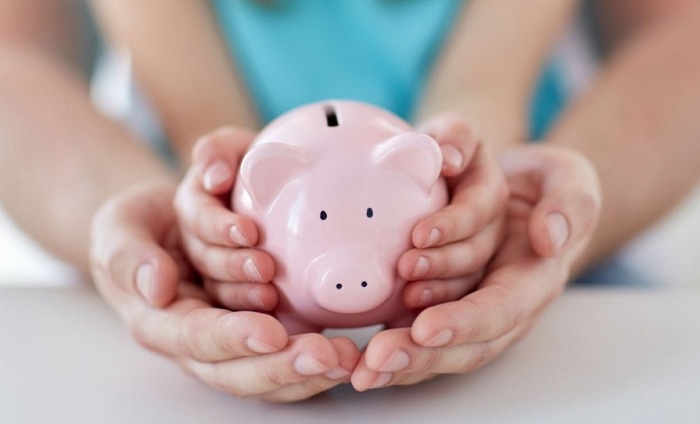Money sense usually doesn’t come naturally. You have to learn it. And if you pass or delay on this opportunity to teach kids about money early on, they could find themselves already in a hole later in life. Luckily there are some fun ways to start building up this skill set from an early age. In fact, one study found that money habits in children are formed by the time they’re 7 years old in the following development progression:(1)(2)
- Counting: by the time they’re 2-3 years old, kids are able to tell apart numbers versus other labeling terms. By age 4, they are able to understand and express basic counting concepts.
Learning Tip: practice counting items in various situations (ex. chairs, cupcakes, etc.) and practice comparing two or more items by one feature (ex. is this stuffed animal bigger or smaller than that stuffed animal?). - Conservation: between 4-5 years of age, kids understand what money means but they may not yet understand that coins have different values – in other words, just because a coin is bigger in size doesn’t mean it’s bigger in value, or 5 pennies aren’t more valuable than 1 nickel.
Learning Tip: practice the value of coins at home. Start with 100 pennies and begin breaking down the concept of other coins as it relates to the $1 (ex. 10 dimes, 4 quarters, etc.). As the child learns these concepts, save that $1 for the learning tip below. - Exchange: by around 7 years old, kids are able to understand the concept of value in money and the notion of exchanging of goods.
Learning Tip: take kids shopping with you and allow them to see you pay for goods. Consider using cash for purchases and receiving change in return. Provide the child $1 (or from learning tip above) to purchase a candy bar and let him or her experience that they need to choose the item they want and that money can only be spent once. - Concept of Earning: kids learn the valuable concept of earning income through receiving an allowance. Although “pocket money” is enjoyable for kids to receive, they often don’t understand the true significance of it until early adolescence (by around 10 years old).
Learning Tip: the concept of time + effort for financial reward is the underlying concept of earning. Begin discussing different adult professions and how they are compensated to help bridge the gap between earning from household chores and the real world. - Saving: to understand the process of saving, a kid needs to have a sense of their future self that is different from (but also an extension) of their current self. In addition to this now versus later concept, a kid needs to develop the idea of delayed gratification.
Learning Tip: create a visual representation for a savings goal. For example, create a chart and color in the progress to goal. Studies have found that the participating adult behavior is what reinforces their understanding and willingness to participate in delayed gratification.
In addition to following the progression of development, here are some other fun and engaging ways to teach kids about money:
- Play Games. Games are fun for all ages, but make sure to factor in some themes around money to start building up this skills set. The classics, such Monopoly or Life, have good money lessons. Or the following top-rated games have been tried and tested to teach money skills to young children: (2)
1. Cashflow for Kids
2. The Allowance Game
3. Money Bags – A Crazy Coin Counting Game
4. Exact Change
5. ThriveTime for Teens - The Money and Life Reality Game - Put a Fun Twist on Shopping. In addition to taking a child shopping with you, include them in the exercise. Create a shopping list (or a budget) and try to keep it below. Or clip coupons and let the kid find the products on sale.
- Pay Allowance in Exchange for Work. This goes along with the concept that money is earned, it doesn’t grow on trees. In exchange for house chores, provide an allowance.
- Encourage Saving. The piggy bank has been around for a long time, and for good reason. Provide a saving instrument (and make it fun when money gets added to it).
- Encourage the Importance of Giving. At the end of the day, it’s not all about saving and spending. Giving is also an important facet of money behavior that should be taught along the way. From volunteering to making donations, charity is an invaluable lesson that should be learned early on.
- Open a Bank Account. By the time the teenage years roll around, open up a bank account in the child’s name to prepare them for managing money in the future.
- Think to the Future. Talk to kids about their future. This conversation will be different depending on their age and situation, but things like a large purchase or saving for college should be discussed upfront and create a saving plan together.
Money management is a vital part of our lives and it should be a foundational element taught to kids, starting at an early age. It is concerning that a T.Rowe Price study found that 66% of parents are reluctant to even talk to their kids about money.(3) In addition to setting a good example, a mindful effort should also be made to teach these important, lifelong concepts. Because after all, as Dave Ramsey quotes “if you don’t teach your kids to handle money, they will grow up and move into your basement.”
(1) https://www.daveramsey.com/blog/how-to-teach-kids-about-money
(2) https://mascdn.azureedge.net/cms/the-money-advice-service-habit-formation-and-learning-in-young-children-may2013.pdf
(2) https://moneywiseteacher.com/board-games-that-teach-money-skills-to-kids/
(3) http://moneyconfidentkids.com/content/dam/money-confident-kids/PDFs/PKM-Surveys/2018%20PKM%20Results%20Deck%20FINAL.pdf
